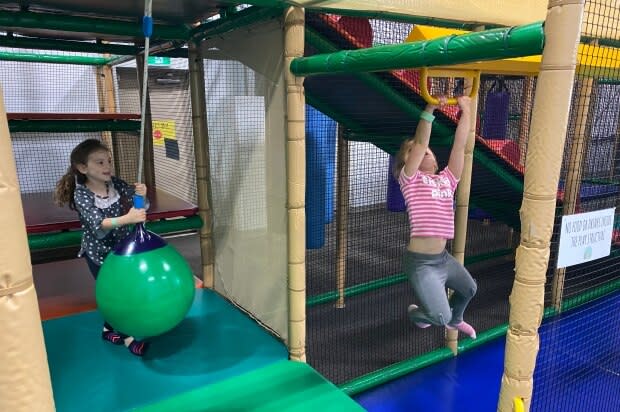Letting kids play indoors is high risk but practical: Sask. public health doctor
As Saskatchewan's reopening plan continues to roll out, playtime for kids across the province is settling into a new normal.
According to the plan, indoor play spaces were allowed to reopen as of July 6, along with sports and other indoor activities. That's as long as these businesses adhere to the increased cleaning, physical distancing, hand sanitizing and signage guidelines.
With those restrictions in mind, on July 8, the owners of Flynn's Forest Indoor Playground opened their Saskatoon doors.
"It was quite stressful the week before because we wanted to make sure that it did feel normal to the kids, while still being really safe and really clean," said Laura Bolton-Debusschere, part-owner of Flynn's Forest.
On top of the required public health guidelines, she noted, they're taking kids' temperatures at the door and making patrons book two-hour time slots online ahead of time to maintain that 30-person limit inside the building at all times.
"Plus, with the pre-booking, we know how many people are coming, making sure we don't have a lineup at the door of people who aren't going to be able to play at that time," Bolton-Debusschere explained, adding it also allows them to have half-hour breaks in between groups to disinfect the play area.
Masks are not mandatory for kids and adults visiting the playground, but all staff are expected to wear them.

It's a nearly identical process at Regina's Klimberz Indoor Playland, which opened on July 11.
Despite also reducing his business' operating capacity by around 85 per cent, in order to follow the COVID-19 restrictions, Klimberz's owner Ryan Scheuer said there are benefits.
"The decibel levels have definitely gone down quite a bit," he joked. "And there's a lot more room for kids to run around; they're not bumping into each other — so, in that aspect, it's good for patrons as well."
Scheuer added the parents he has spoken with since they've reopened have been grateful for something new to do with their children.
"It gives kids another place to burn off that energy since they've been cooped up for months," he explained. "It's a great place to get active, and the kids are anxious to get out and start doing what they used to do before COVID-19."
'If kids are going to play, let them play,' says doctor
While she considers indoor playgrounds to be a high risk environment during the pandemic, Dr. Anne Huang, Saskatchewan's former deputy medical health officer and current public health physician, said parents can feel safe taking their kids there.
"Our [COVID-19] background risk is low in Saskatchewan, so the probability of coming into contact with a child, adult or staff who's infectious is really low," she explained. "But if things change and we see the case counts increase in Saskatchewan, that kind of indoor close contact — children playing — that would be one of the activities that I would pull back."
Huang noted the risk of indirect transmission from touching objects, such as a play structure, is likely much lower than direct droplet transmission through conversation.
As parents are choosing a place indoors to take their kids, Huang noted anywhere with good ventilation and staff who are wearing masks is preferable.

When it comes to the physical playtime, Huang said adults need to be practical.
"It's expected that kids are going to mix ... so I would just let them be," she said. "If kids are going to play, let them play."
Huang noted it's good to get kids washing their hands before heading onto the play structure, as soon as they get off of it and a third time when they're home.
Ideally, to "offer some protection," it would be best for children to stick to the same playground so they can limit the number of people they're coming into contact with, she added.
However, the safest option, Huang emphasized, is still the outdoor playground or swimming pool — both of which offer equal opportunity for physical activity but with better ventilation.


